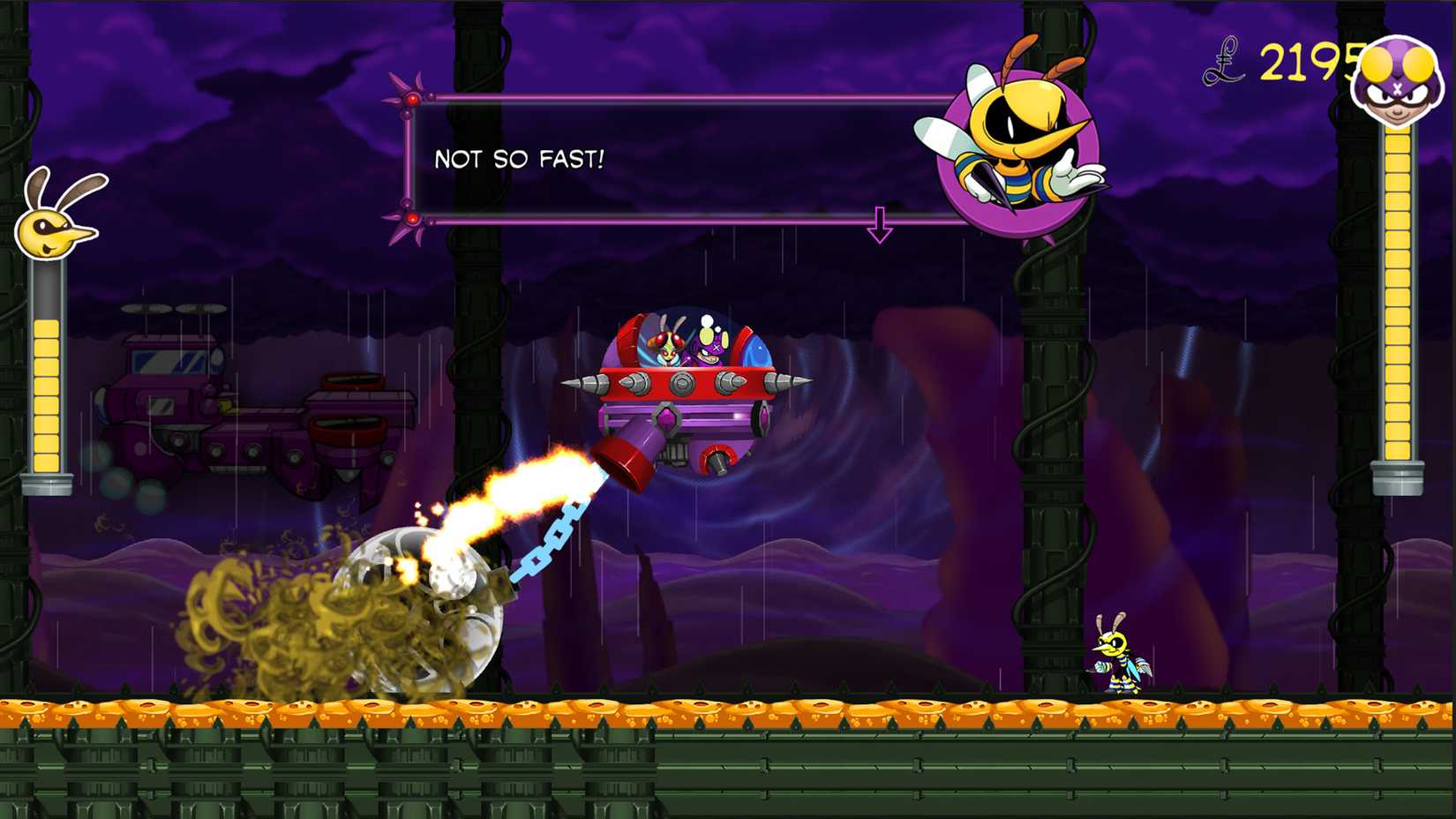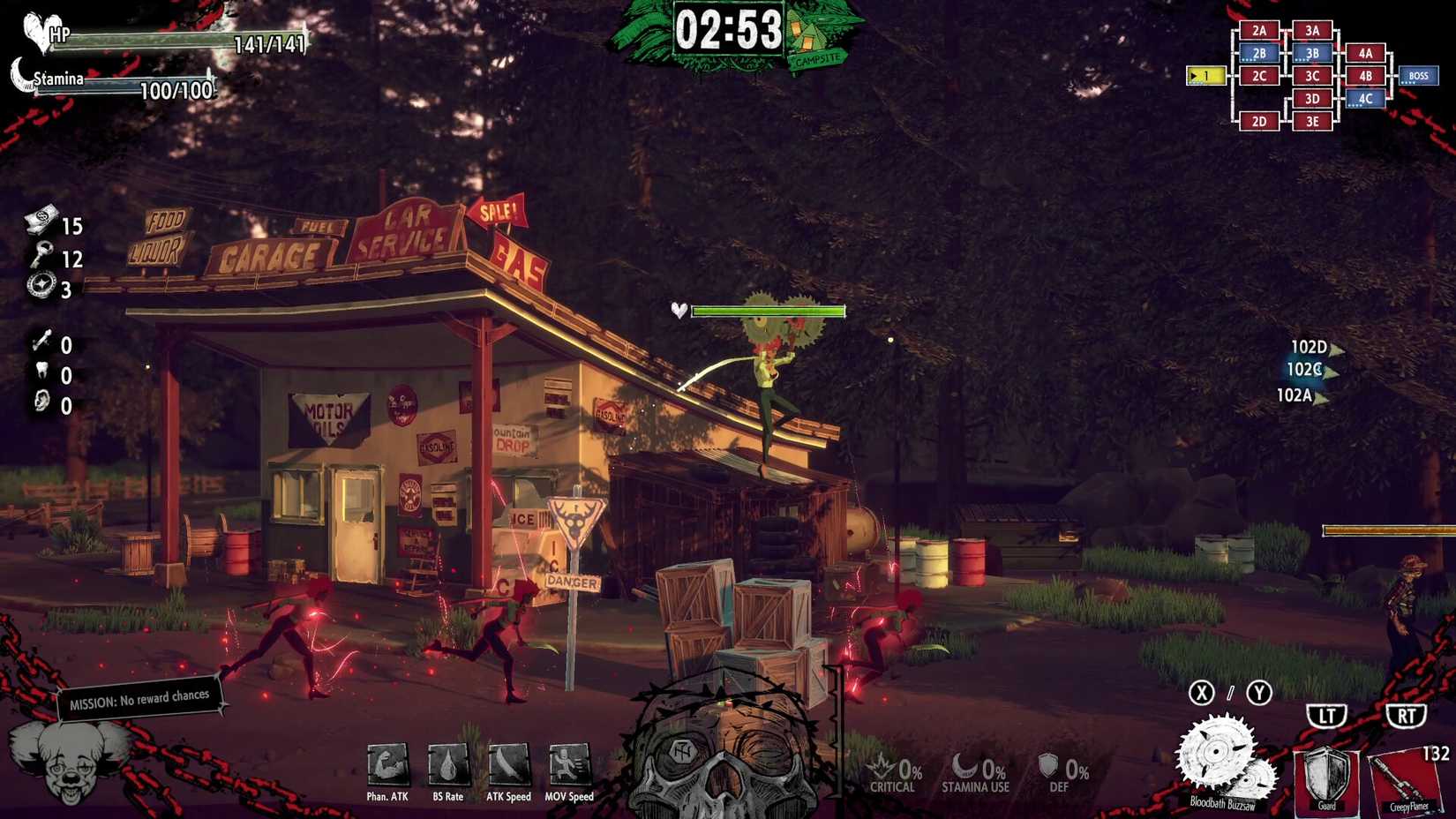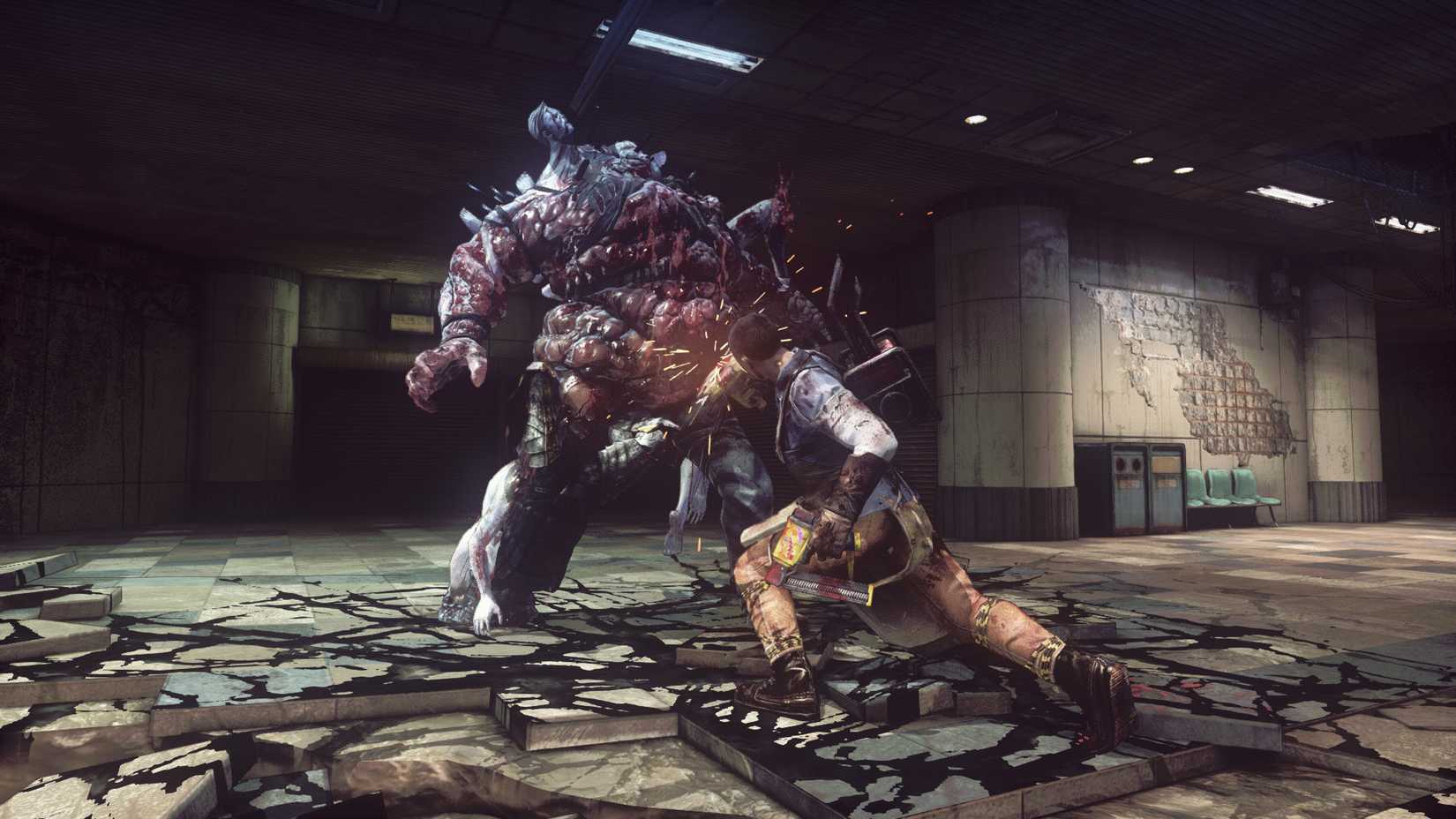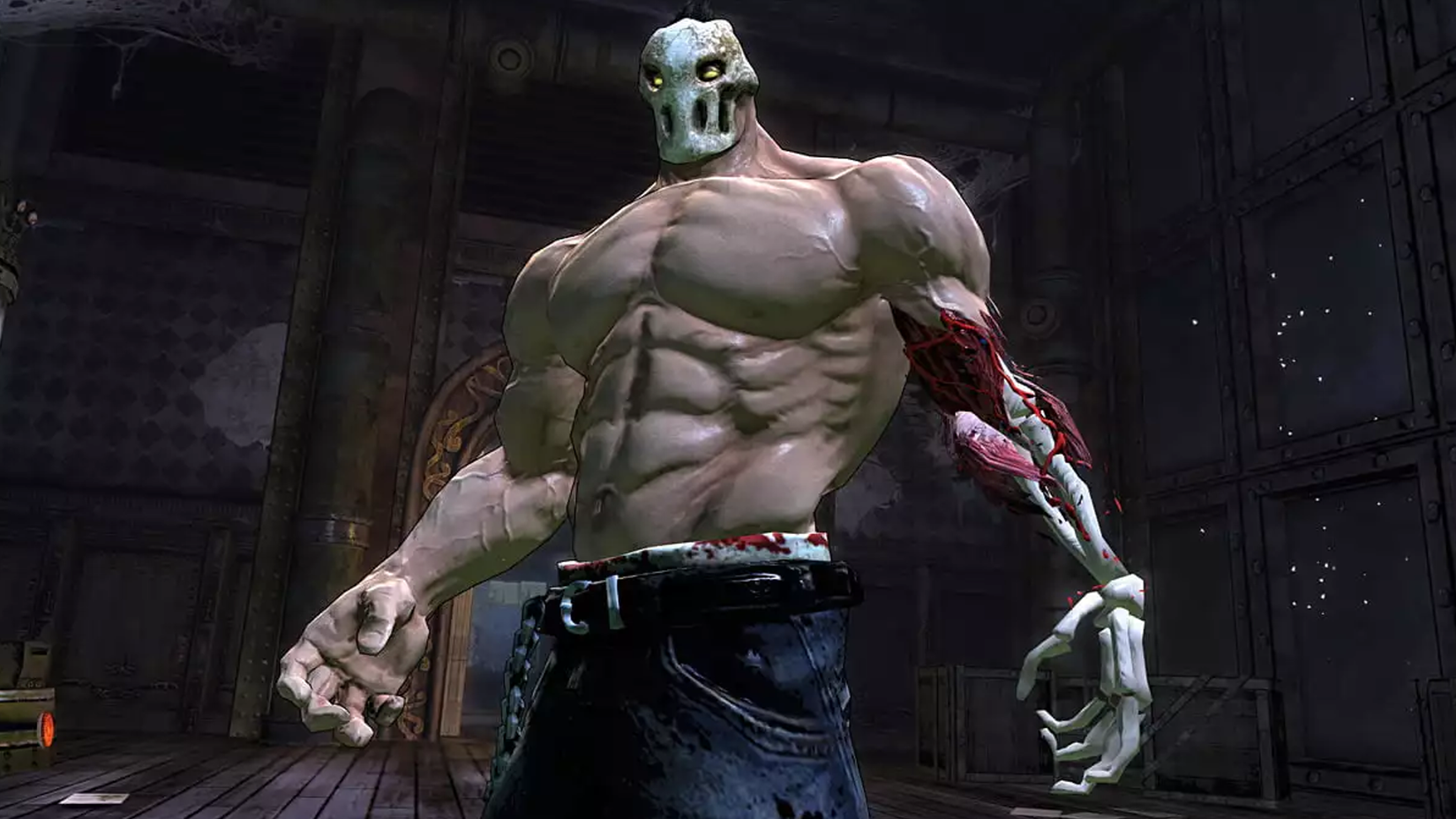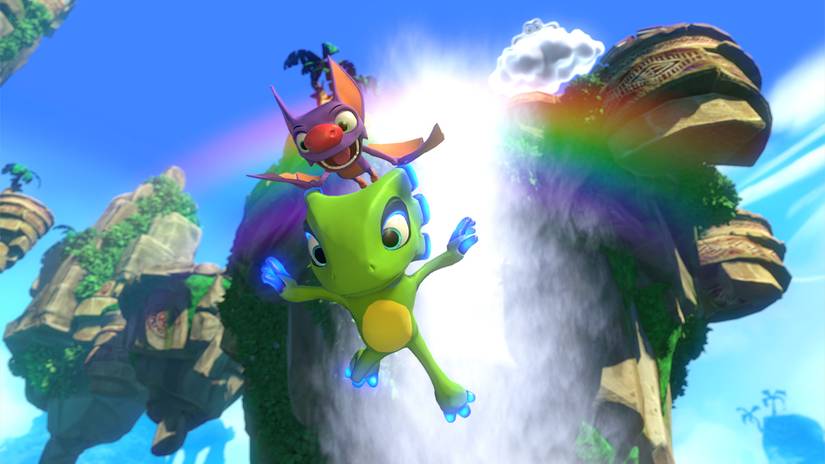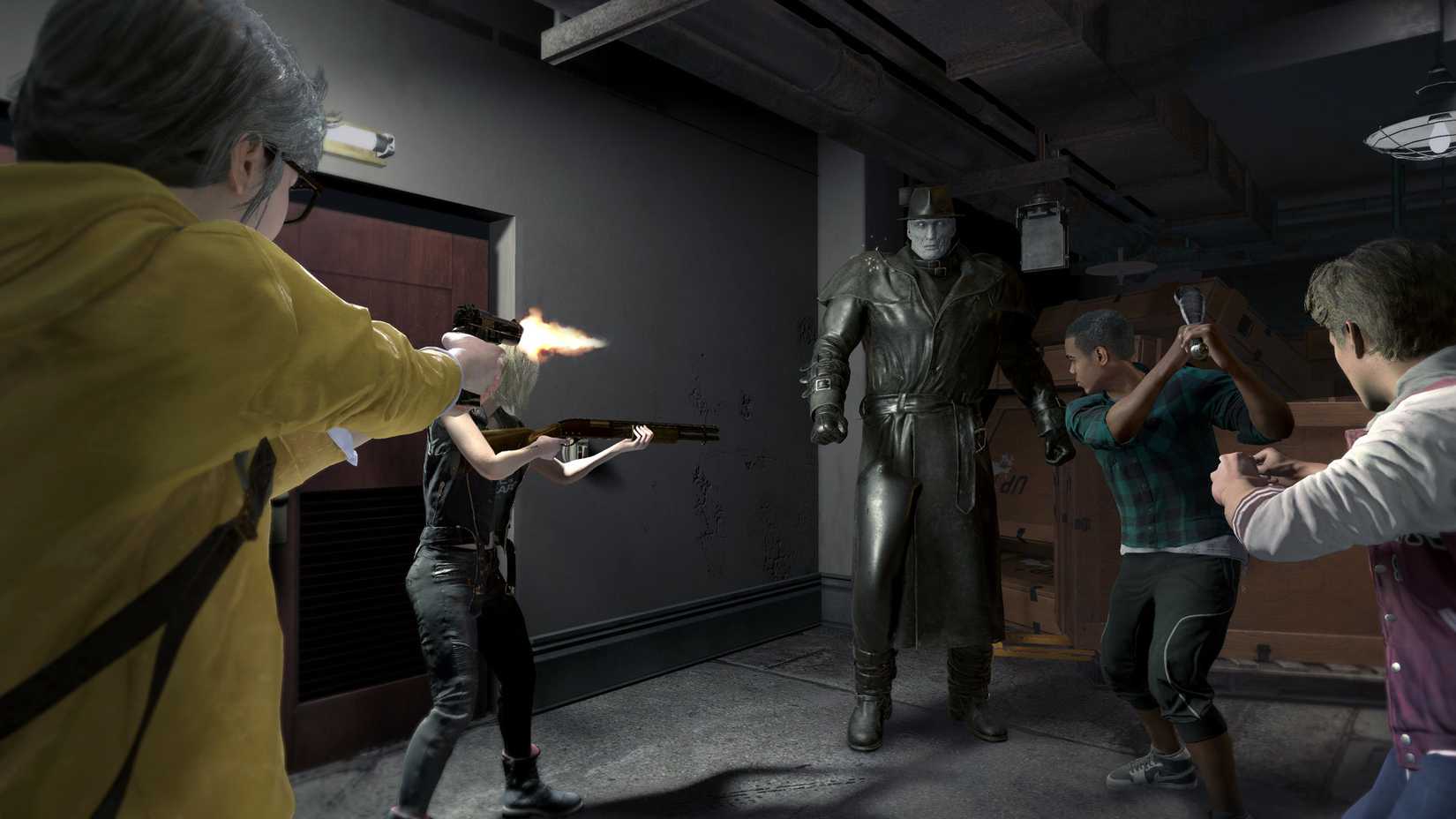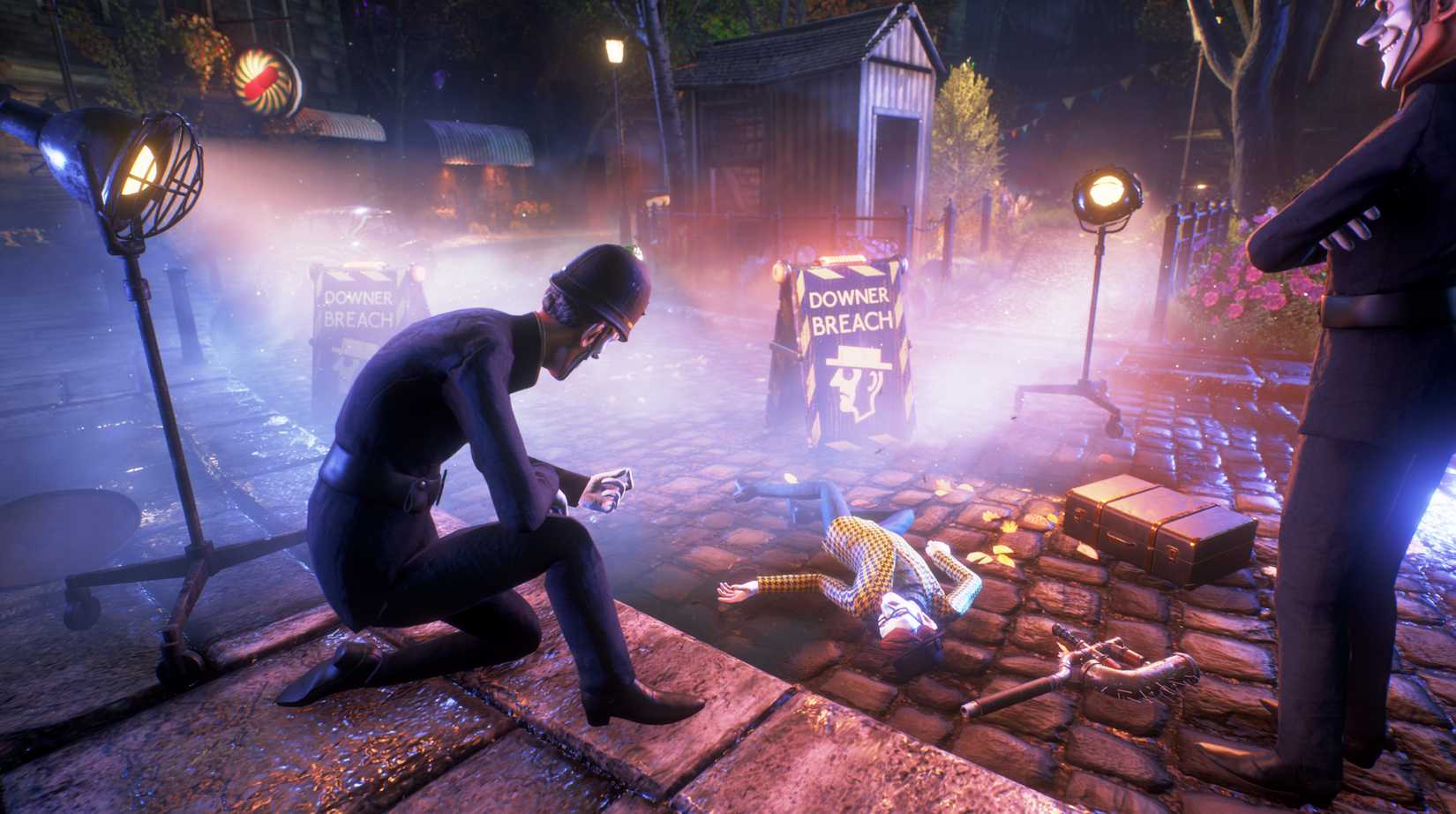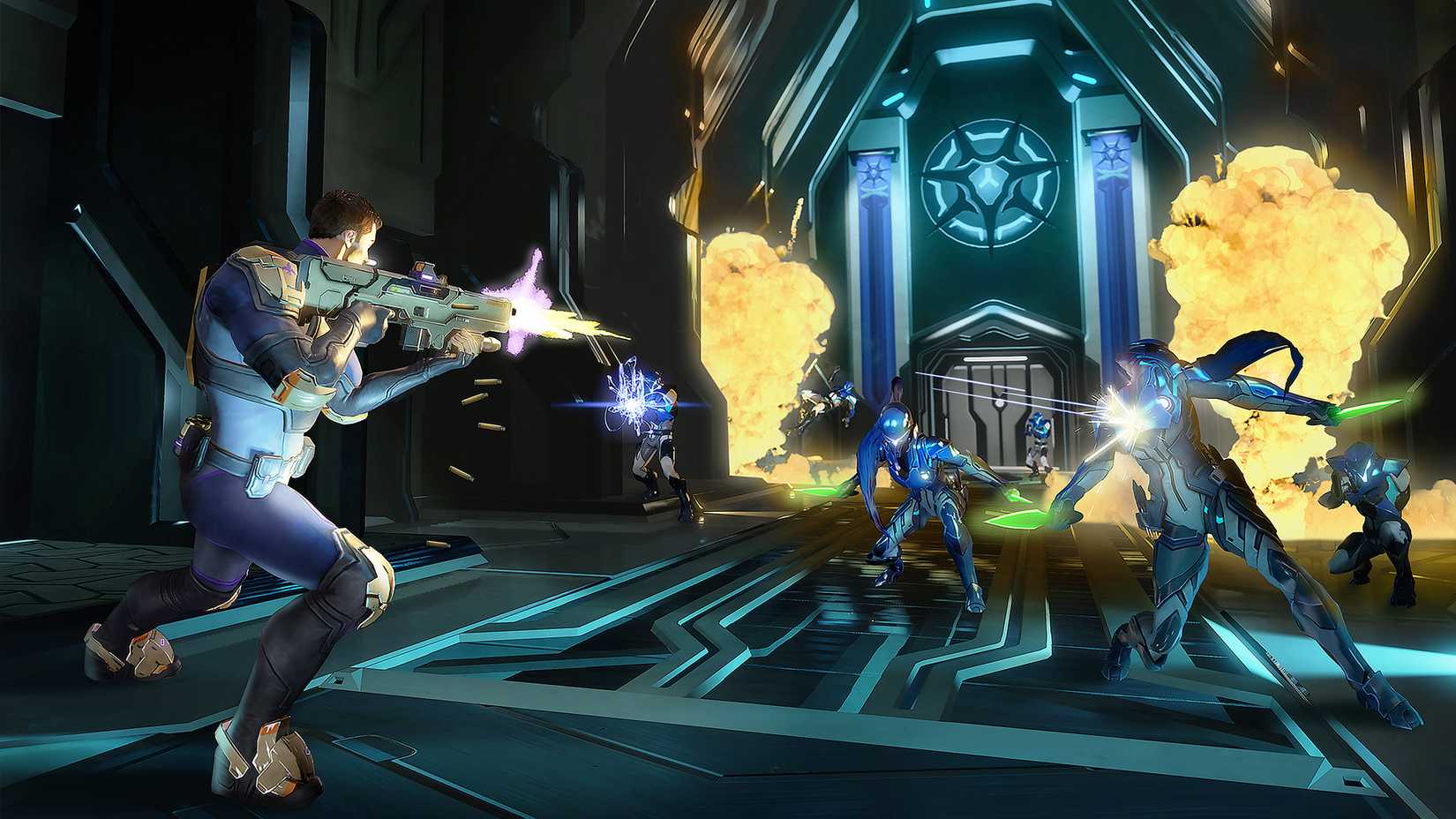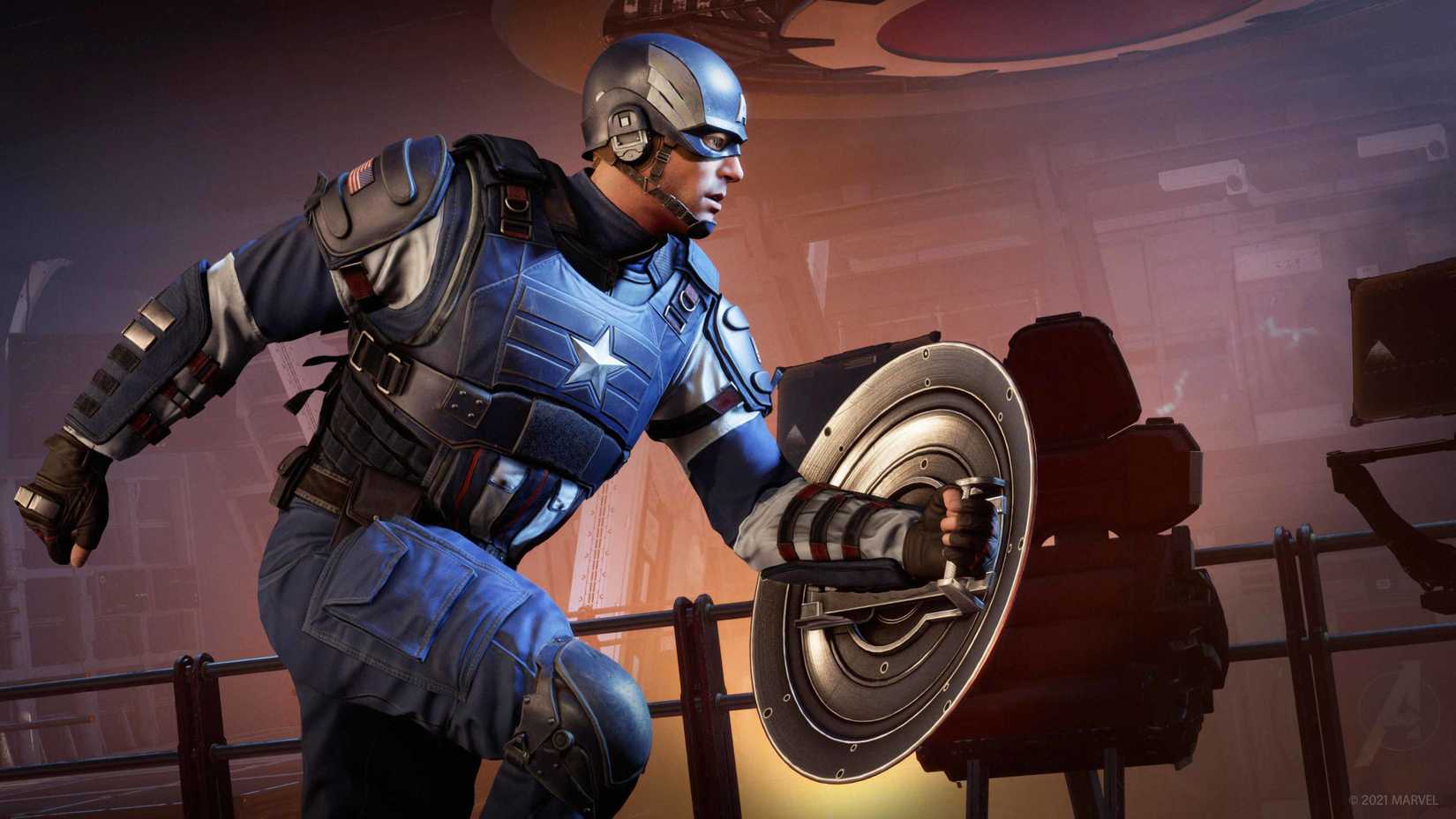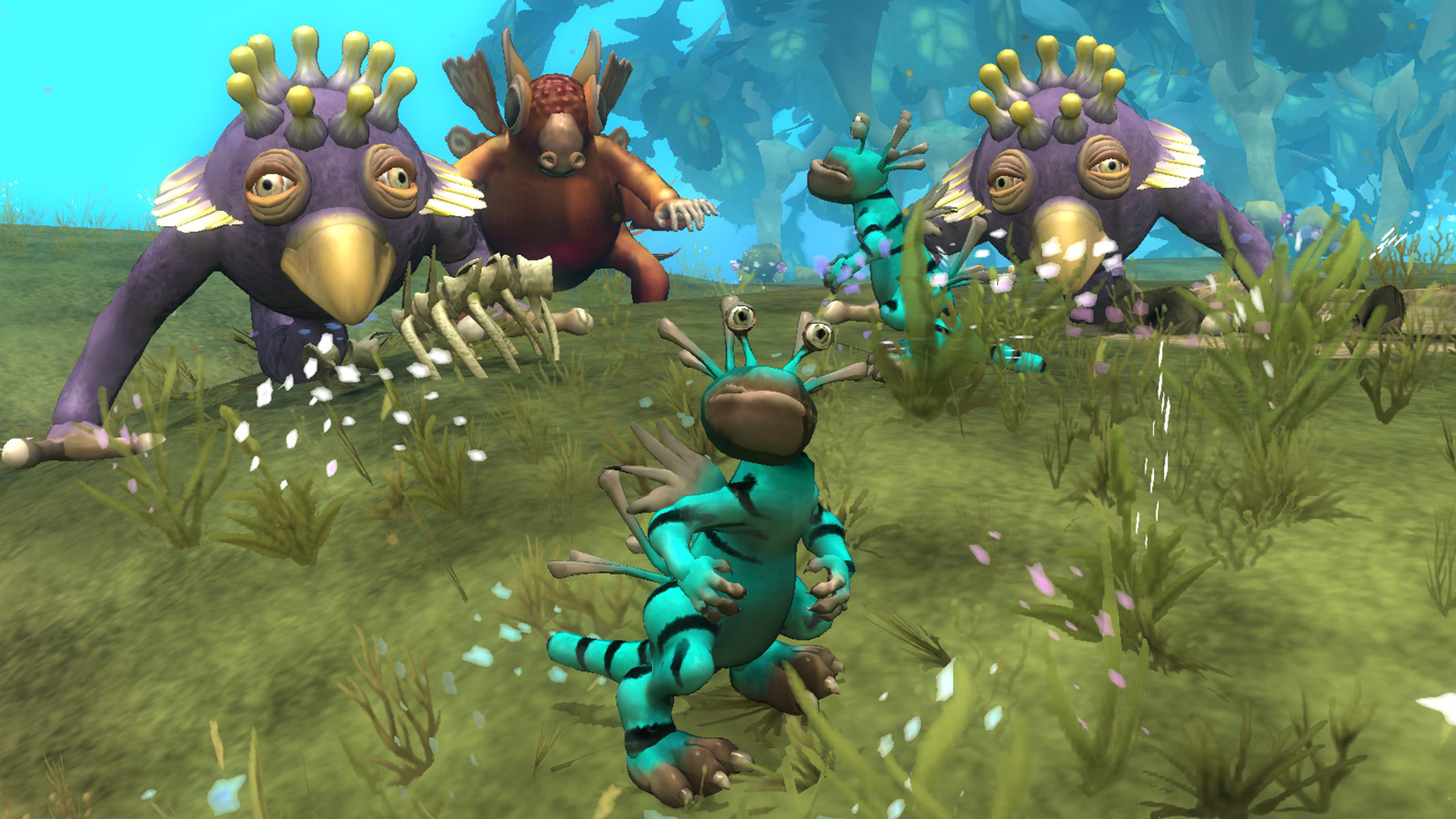I’m not a game designer, so I won’t pretend I know exactly how a game concept actually gets put into motion. I’d like to think, however, that every great game that’s ever been made has started with a singular idea, something as simple as “what if you could go here and do this.” I’ve heard many fascinating ideas for games over the years, all exactly the kinds of things I would love to see realized.
Unfortunately, coming up with a concept and actually executing it are two very different beasts. There have been so many games over the years that promise us the world with novel, interesting ideas, but when it comes time to put everything in motion, they either fall well short of their lofty goals or get stymied by questionable mandates and design decisions. It’s bad enough when a game comes out, and it’s not fun or enjoyable, but it’s even worse when a game concept that has so much clear potential can’t seem to manifest it, and all we have to show for it is the half-baked dregs left behind.
10
Nefarious
Playing As The Boss Sounds Good On Paper
I’ve long carried a torch for the many villains, bad guys, and bosses of gaming. Bowser still ranks high as one of my favorite Mario characters. I’ve also thought it would be interesting to play a game from a typical boss’s perspective, using a big robot or what have you to pound a little dude running around under foot. This is what indie game Nefarious was going for, though I can’t say it actually got there.
The majority of the game is a fairly average sidescroller, wherein you play a villain named Crow as he travels the world kidnapping princesses from various video game-adjacent heroes. The main levels are nothing special, and frankly, get a little too carried away with the platforming challenges sometimes, but the highlights are supposed to come at the end.
The game’s big draw is its “reverse boss fights,” which place you in a large vehicle or robot to try and smack down the platforming hero of the hour. It’s a cool idea, but the execution is incredibly sloppy, with janky hitboxes and unclear attack patterns. I guess it makes thematic sense that the hero would be hard to fight like this, but it doesn’t make for a very fun game.
9
Hotel Barcelona
Cool Vibes Can’t Hide Jank
I adore weird games from auteur directors, truly. My all-time favorite still remains Goichi “Suda51” Suda, creator of No More Heroes and Killer7. When I got the word that he was teaming up with another of my favorite industry weirdos, SWERY, for a roguelite game called Hotel Barcelona, I knew I had to see how they were going to cook. Sadly, it seems even Suda can forget to turn the stove on.
Hotel Barcelona is a sidescrolling roguelite in the same vein as Dead Cells. The whole thing is caked in Suda and SWERY’s eccentricities, from various slasher horror movie references to lovably strange NPCs. I’m particularly fond of the hotel bartender who gives you coins in exchange for severed ears and sees nothing particularly wrong with this.
Unfortunately, the cool atmosphere does nothing to make the game actually fun or engaging. The combat is stiff and floaty, the game is full of unnecessary, ancillary mechanics, and the whole presentation just feels very cheap and stocky. I wrote our review of the game, and spoilers, it didn’t score particularly high.
8
Let It Die
Microtransactions Strike Again
Speaking of Suda51, his company, Grasshopper Manufacture, has made games without his direct involvement before. Even if he’s not involved, the developer does still pride itself on its fantastically weird, singular niche aesthetics. When I saw the first trailers for Let It Die, in which a grim reaper on skateboard with swirly glasses calls you “senpai,” I had high hopes this was going to be another delightfully bizarre romp. It is that, but it is also a rather obnoxious freemium game.
On its surface, Let It Die is a Frankenstein of roguelike and soulslike games, with the permadeath and resource gathering of the former and the combat and equipment management of the latter. It’s all set against a backdrop of a tower of trash and rusty machinery full of bloodthirsty mutants wielding nail bats and power tools. Honestly, the game looks really cool, and I still like it for that.
What I like a lot less is the copious monetization. Let It Die is technically free-to-play, but you have to cough up for premium currency if you want more character slots, more storage space, or continues after you die. You also had to wait in real time for certain in-game tasks, which could only be sped up with more premium currency. The free-to-play model can be applied to many game genres, but this wasn’t one of them.
7
Splatterhouse (2010)
No Substance Under The Splatter
The late 2000s, early 2010s were reboot central, with every dusty IP left at the back of the pantry getting a fresh coat of paint. The funny thing about paint, though, is that you need to have an actual wall under the paint for it to do its job. Replace the paint in this analogy with copious human gore, and you have a general idea of what happened to the 2010 reboot of Splatterhouse.
I was way into this game’s concept when it was announced. It was all heavy metal (with licensed bands like Mastodon), gross and grungy enemies and backgrounds, and a healthy dollop of the ol’ ultraviolence. Plus, we had Jim Cummings voicing the Terror Mask, who is genuinely the only memorable voice performance in this whole game.
While the game ultimately did have all of that stuff, that’s pretty much all it had. The general gameplay was uninteresting at best and irritating at worst, and the story was pretty much nonexistent. Yeah, nobody was expecting high art from Splatterhouse, but some memorable setpieces at the very least would’ve been nice. About the only thing that stuck with me about this game besides Jim Cummings was the cool Terror Mask statue I got from buying it, which my college roommate accidentally knocked over and shattered.
6
Yooka-Laylee
Too Committed For Its Own Good
Most 90s kids have a hard-coded fondness for 3D platformer collect-a-thons, with the chief example being Banjo-Kazooie. Considering how Rare has treated that IP over the years, it’s understandable to feel a yearning for those old days. When some former Rare staff teamed up to crowdfund their spiritual successor Yooka-Laylee, it felt like they could do no wrong.
Like its spiritual predecessor, Yooka-Laylee followed a titular creature duo who would run around large, colorful worlds full of sarcastic talking inanimate objects, collecting all sorts of doodads and opening the way forward. The big problem with this game was that it was a little bit too mired in the norms of N64-era collect-a-thons, and had a distinct lack of modern-day quality of life design decisions. It was hard to control, it was never really clear where you were supposed to be going, and both the worlds and your moves took too long to unlock.
In a lone bright spot on this list, Yooka-Laylee’s remake, Yooka-Replaylee, has actually addressed most if not all of these shortcomings, and given the game the form it originally needed to have. Took almost a decade, but hey, better late than never.
5
Resident Evil: Resistance
No One Can Be Evil Like A Real Wesker
I get the distinctive impression that the reason the Resident Evil 3 remake felt like a shorter, less substantial game than the Resident Evil 2 remake is that Capcom was expecting everyone to immediately pick up Resident Evil: Resistance after they finished it. Resident Evil: Resistance was a spin-off game that came bundled with Resident Evil 3, an asymmetrical multiplayer game that pitted a single “Mastermind” against four Survivors. A nifty idea, though perhaps misplaced; I can only recall a couple of instances through the Resident Evil series where you were directly antagonized by some manner of direct-control trickster.
The mastermind player could set up various traps and zombie spawns in an effort to hinder and kill the Survivor players before they could accomplish their tasks and reach the other end of the map. Masterminds had a limited amount of energy they could use to place traps, and on rare occasions, summon up a bigger baddie to deal with like Mr. X or G-Birkin.
Unfortunately, the gameplay loop from either side of the equation left something to be desired, made worse by the amount of inter-round shenanigans with menus, items, and premium currencies. Don’t even get me started on the terrible bugs and server issues. It got so bad, the entire game ended up being delisted from Steam.
4
We Happy Few
Beautiful Design, Mishmashed Game
I love a game that can commit to an established aesthetic while putting a fun new spin on it. For example, I was immediately enthused by We Happy Few’s initial trailer and its depiction of a surveillance state town on a secluded British island where everyone has to be happy or else. It’s the kind of simple, distinct hook that’s guaranteed to grab eyes and lure you in with the promise of a deeper mystery. When it finally launched, after an extremely protracted Early Access period, We Happy Few did still have its great design and story going for it, but the game part? Eh, not so much.
The central hook of the game is that you’re supposed to hide in plain sight by dressing well, not acting like a weirdo, and periodically popping happy pills to keep the cops and drug scanners off your back. For some reason, though, the devs also felt the need to shoehorn in a spattering of gaming’s popular concepts at the time, including a randomly-generated sandbox map, plus gathering and crafting mechanics. It all results in a game that has no idea what it wants to be and ends up being none of them.
Interestingly, We Happy Few actually got several DLC packs that were standalone, linear action campaigns, all of which were received better than the base game. Funny how that works.
3
Agents Of Mayhem
How Did They Mess Up Saints Row G.I. Joe?
With the release of completely off-the-wall entries Saints Row 4 and Gat out of Hell, the Saints Row series had gone all in on going completely bonkers. I suppose it was as good a time as any for a rebranding, and in fact, one of the endings of Gat out of Hell sees the timeline being rebooted with the Saints as a lawkeeping agency. Agents of Mayhem was supposed to carry that on, going for a G.I. Joe aesthetic of weird and varied heroes in a high-tech paramilitary organization fighting a world-conquering shadowy empire. It sounded like fun in a Saturday morning cartoon way.
The big problem with Agents of Mayhem, and this may have been a harbinger of what went wrong with the Saints Row reboot, was a distinct lack of the franchise’s identity hallmarks. The entire fun of the original quadrilogy was that you could engage in all kinds of gang violence and sociopathic behavior with little-to-no consequence. Agents of Mayhem didn’t have any of that; it was basically just a single-player hero shooter.
The map was pretty much empty, many of the missions recycled environments and landmarks, and while the characters had cool backstories and designs, they never really did anything especially interesting. Seriously, I am hard-pressed to remember any particular event or setpiece in this game, that’s how boring it was.
2
Marvel’s Avengers
Should’ve Been An Easy Layup
Like most of the consuming public, I enjoy Marvel stuff well enough. Even after I burnt out on the MCU, I’m still down for a good-looking Marvel game with fun-looking gameplay. This is why I and many others were interested in Marvel’s Avengers, which looked to be a good old fashioned action romp starring a bunch of Avengers and Avengers-adjacent super-folks. It should’ve been the simplest, easiest layup any game concept ever had, and they still blew it.
Avengers starts out decently enough, if perhaps a little overly-focused on Kamala Khan, gradually introducing our favorite heroes, setting up a conflict, and giving us a rundown of their combat abilities. Then, a couple of hours in, the veneer falls away, and Marvel’s Avengers reveals its secret identity: a half-baked live-service game.
The game pours a veritable avalanche of crafting, cosmetics, and arbitrary gear numbers down your throat, then starts dumping you into randomly-generated liberation missions and won’t let you back into the story stuff until you complete enough of them. All we needed was a nice-looking linear action game with fun combat, and everyone would’ve been happy! That’s all we needed, Square Enix!
1
Spore
Loses Its Identity Midway Through
I’m probably going to make some people mad with this one, but I’m going to say it anyway: the main thing that got everyone interested in Spore back in the day only makes up about a fourth of the game. I remember when the demo version, the Spore Creature Creator, released, and everyone had a grand old time making their own horrible freak beasts. When the full game launched, you got to start in a primordial soup as a little single-celled organism, gobbling up other amoebas and steadily evolving until you got to venture onto land.
From there, your critter steadily becomes fully realized, gaining more evolutionary advantages like the ability to eat meat and plants or use more dexterous limbs and digits. Now, that’s all good and fine, but once you reach the tribal and civilization stages, the game suddenly transforms into less interesting versions of SimCity and Civilization.
It’s not about making a better freak beast anymore, it’s just about building towns or upgrading technology. There’s nothing inherently wrong with that, but for my perspective at least, I didn’t play a game about designing my own monstrosities just to build another city. Frankly, I think it’s rather boring to act like the final goal of all living beings is human-adjacent sapience.



